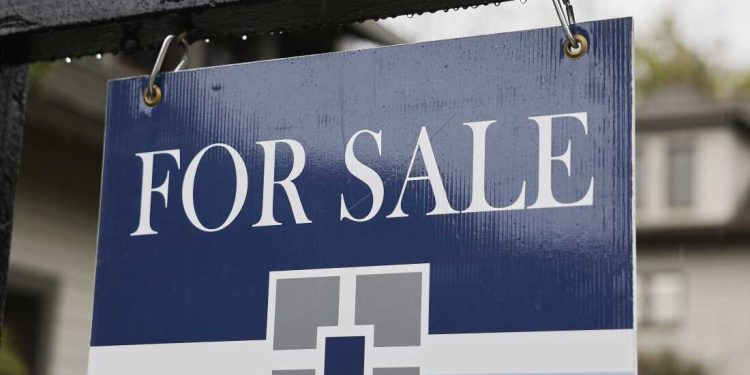
A “for sale” sign is displayed in front of a house to sell last month in Pasadena, California.
Mario Tama / Getty Images / Getty Images North America
hide
tilting legend
Mario Tama / Getty Images / Getty Images North America
It is spring and “for sale” panels appear in front of houses across the country.
But with so much uncertainty in the economy, this is an open question if the spring housing market will be hot … or not. Let’s see the forecasts.
Mortgage rates and house prices are both raised
This is certainly not the cheapest time to buy a house. The average mortgage rate at 30 years is now 6.65%A little in January, but still quite high.
Many analysts provide that mortgage rates will persist around this level for the moment, especially since the federal reserve has indicated that it is unlikely to lower interest rates Until later this year.
Selma Hepp, chief economist of the Cotality real estate analysis company, says market volatility could lower mortgage rates. This is because mortgages generally follow the yield On the bonds of the treasury at 10 years, which are affected by the concerns of investors concerning the economy.
“Due to the concerns concerning a slowdown in the labor market, due to the concerns about the increase in the risk of recession,” said HEPP.
But there are other factors that maintain high mortgage rates – including inflationary policies like prices.
Another means of deterrent for buyers is the high cost to buy a house. The median price of houses has increased 47% in the past five years.
Good news for buyers: more houses arrive on the market
Last year was the sales market for the slowest existing houses Since 1995. It is not that people did not want to buy – there was simply not much to sell.
The big question is now whether a frozen market can start to thaw. The signs suggest that things are starting to change, with more inventory that happens on the market.
In February, there was 17% of additional existing houses for sale compared to last year, followed by a 10% increase in new announcements In March compared to a year ago.
Over the past two years, as mortgage rates have risen, there have been concerns about a “locking effect” causing owners at low interest interest never move. But the recent increase in lists suggests that over time, people TO DO end up moving.
Other announcements should translate into more sales. The return to the office also lead people to get closer to cities, now that they must be in the office several days a week.
The increased inventory will put buyers on a better basis, which gives them more options and more leverage.
For sellers, more competition could mean that they must be more flexible on the price. It is already starting to happen. More than 17% of active announcements included price discounts in March, according to Realtor.com – the highest for all March since 2016.
Economic uncertainty obscures forecasts
Jeremy Masem, 40, is trying to become a owner. During the last year, he and his wife were looking for a house in the county of Fairfield, Conn.
A few weeks ago, they offered $ 161,000 on the requested price of a house. But their offer was still not enough.
This week, they lost again – the ones were one of the 17 offers. Masem says they can decide to continue to rent for a while.
“I’m a little nervous … all the different prices,” he said. “What will happen? What will not happen? Maybe waiting for and see a year or two in our best interest.”
Others can make the same choice. The pending lists – that is to say contracts under contract – fell 5.2% from one year to the next in March, according to data from Realtor.com.
Those who fear losing their jobs may not want to engage in a great payment right now.
“They tend to stay there,” said Hepp to Cotality. “They end up not moving unless they do it.”
The uncertainty also adds that the costs of home ownership which were quite stable, such as home insurance or HOA costs, have skyrocketed in certain places.
This can ensure that the purchase of a house is more a bet than before.
In addition to everything else, how agents are paid
Last year, a regulation with the National Association of Realtors led to some major changes for buyers and sellers.
Before these new rules are in force, sellers would generally pay both their own agent and the buyer agent. Now it’s no longer a fact. It is up to the seller to pay the buyer’s agent and how much.
A second big change is that now buyers wishing to work with a real estate agent must sign an agreement that sets the agent’s compensation – before being able to see houses.
So, almost the only way to see a house without signing something these days is to go to an open day – or represent yourself and contact the registered agents directly.
Many real estate agents say that the system has not really changed much. But the new rules mean more to negotiate in the middle of what can already be a delicate process in a very expensive transaction.
“There is still a confusion on which pays, the percentage,” explains Masem, the buyer of the Connecticut Home.
He says that the whole process of looking at houses and making offers can be exhausting and timing.
“A large part of our free time is devoted to looking at this kind of thing,” explains Masem. “I have the impression that we are missing regular things that we would like to do.”


